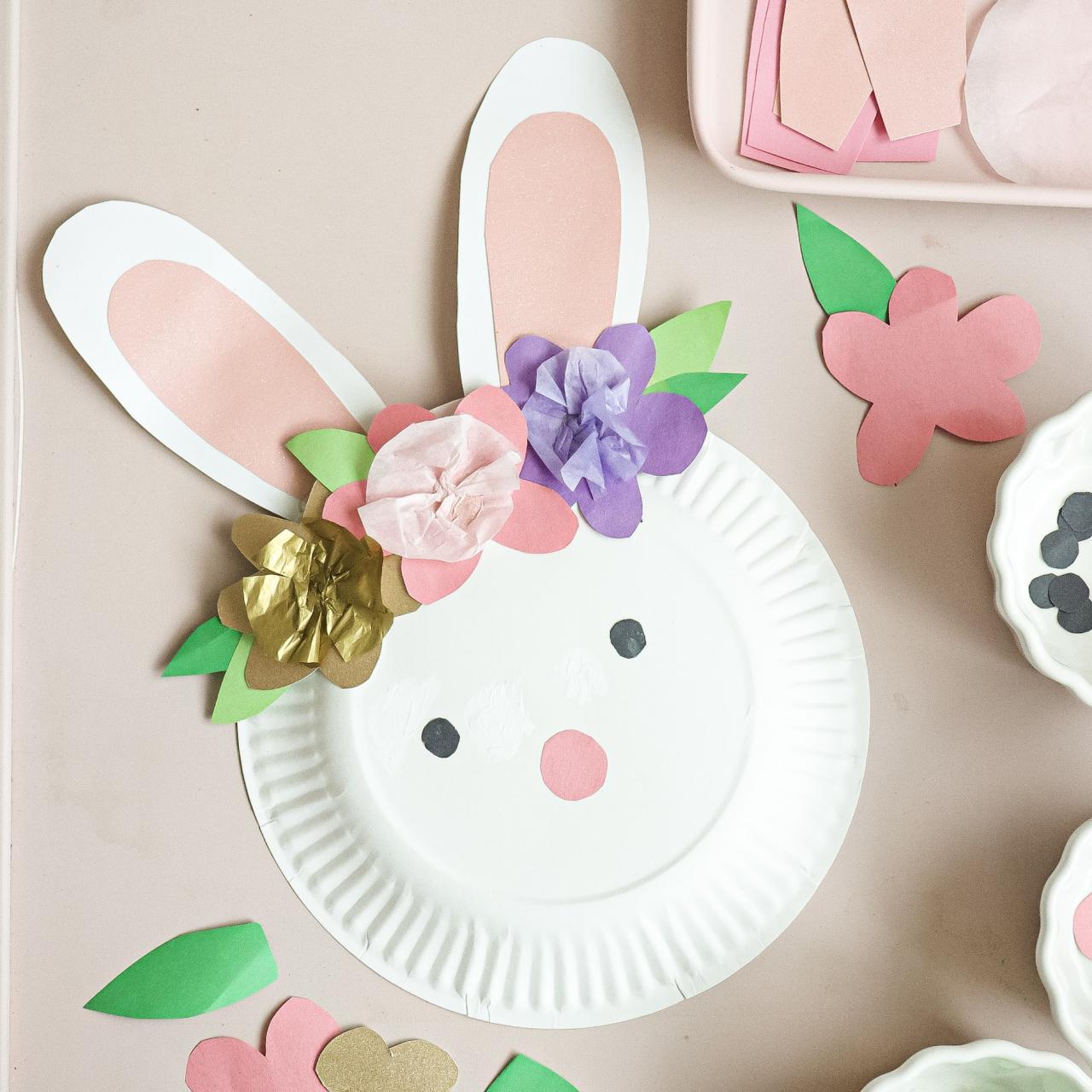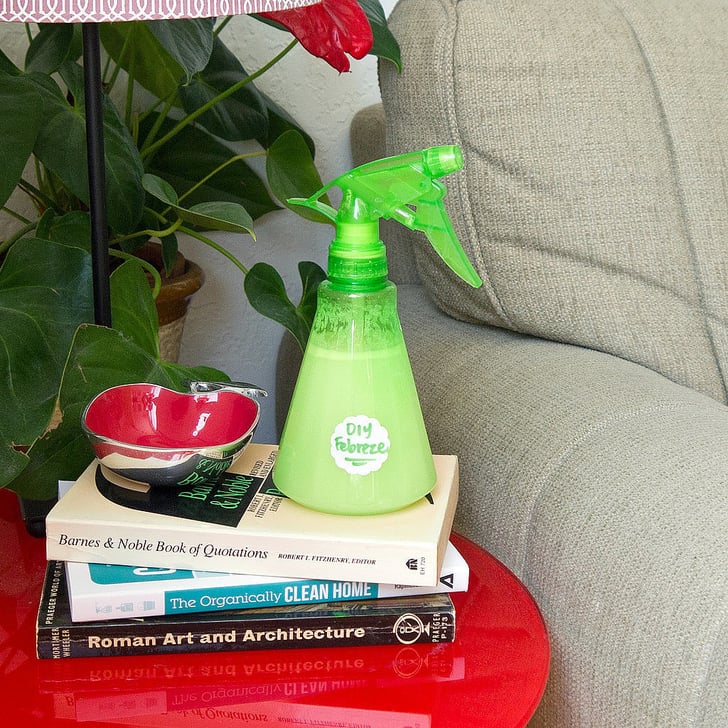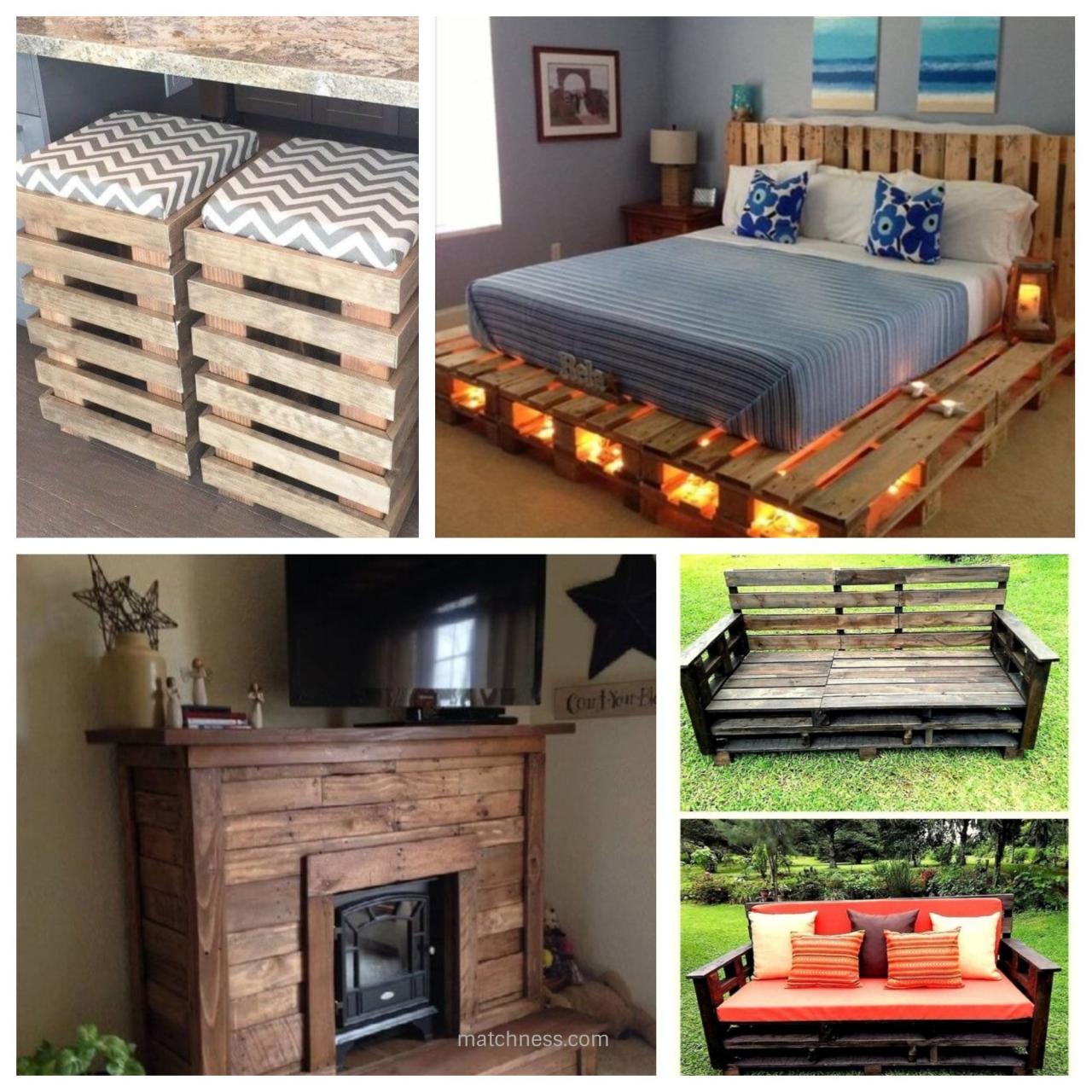DIY accessories are more than just a trend; they’re a creative outlet for expressing your unique style. From dazzling jewelry to charming home decor, crafting your own accessories lets you personalize your world with a touch of individuality.
The appeal lies in the freedom to experiment with different materials, techniques, and designs, turning your vision into tangible creations. Whether you’re a seasoned crafter or a curious beginner, the world of DIY accessories offers endless possibilities for self-expression and artistic exploration.
Materials and Tools for DIY Accessories
Creating your own accessories can be a rewarding and fun experience. It allows you to express your creativity and personalize your style. To get started, you’ll need to gather the right materials and tools. This section will explore the common materials used for DIY accessories and the essential tools needed for different types of projects.
Materials for DIY Accessories
This section will discuss the common materials used for DIY accessories, categorized by their type.
Metals and Wires
Metals and wires are versatile materials used for creating a wide range of accessories, from simple earrings to intricate necklaces. Some common metals used in DIY include:
- Aluminum: Lightweight and easy to work with, aluminum is a good choice for wire wrapping and jewelry making.
- Copper: Durable and with a beautiful patina, copper is often used for wire wrapping, beading, and creating unique textures.
- Silver: A classic choice for jewelry, silver is known for its elegance and durability.
- Gold: A luxurious metal, gold is often used for accents and embellishments.
Wires are available in various gauges, colors, and textures. They are used for wire wrapping, beading, and creating intricate designs.
Textiles and Fabrics
Textiles and fabrics are essential for creating accessories like scarves, headbands, and bags. Some common fabrics used for DIY accessories include:
- Cotton: A natural and breathable fabric, cotton is versatile and easy to work with.
- Silk: Known for its luxurious feel and drape, silk is often used for scarves and other elegant accessories.
- Leather: Durable and stylish, leather is a popular choice for bags, belts, and other accessories.
- Felt: A soft and pliable fabric, felt is often used for creating whimsical accessories and embellishments.
Beads and Gemstones
Beads and gemstones add color, texture, and sparkle to DIY accessories. They come in various shapes, sizes, and materials. Some common types include:
- Glass beads: Available in a wide range of colors and finishes, glass beads are versatile and affordable.
- Wooden beads: Natural and warm, wooden beads add a rustic touch to accessories.
- Gemstones: Precious and semi-precious stones, like amethyst, turquoise, and quartz, add elegance and beauty to jewelry.
- Plastic beads: Lightweight and colorful, plastic beads are a good choice for creating fun and playful accessories.
Wood and Resin
Wood and resin are natural materials that can be used to create unique and beautiful accessories.
- Wood: A durable and versatile material, wood can be carved, sanded, and painted to create a variety of accessories.
- Resin: A clear, epoxy-based material, resin can be cast into various shapes and colors to create stunning jewelry and other accessories.
Plastic and Polymer Clay
Plastic and polymer clay are versatile materials that can be molded and shaped to create a wide range of accessories.
- Plastic: Lightweight and durable, plastic is often used for creating colorful and fun accessories.
- Polymer clay: A versatile material that can be baked to harden, polymer clay can be used to create intricate jewelry, figurines, and other accessories.
Essential Tools for DIY Accessories
This section will discuss the essential tools needed for different types of DIY projects.
Cutting Tools
Cutting tools are essential for shaping and trimming materials. Some common cutting tools used in DIY accessories include:
- Scissors: Used for cutting fabric, paper, and other soft materials.
- Wire cutters: Used for cutting metal wires and jewelry findings.
- Rotary cutter: A tool with a circular blade used for cutting fabric and other materials with precision.
- Utility knife: A versatile tool with a retractable blade used for cutting various materials.
Shaping Tools
Shaping tools are used to mold and form materials into desired shapes. Some common shaping tools include:
- Pliers: Used for bending and shaping metal wires and jewelry findings.
- Hammer: Used for shaping metal, hammering metal into different textures, and flattening metal sheet.
- Molds: Used for casting resin, polymer clay, and other materials into specific shapes.
- Clay tools: Used for shaping and sculpting polymer clay.
Joining Tools
Joining tools are used to connect different parts of accessories. Some common joining tools include:
- Glue: Used for bonding various materials, including fabric, wood, and plastic.
- Sewing machine: Used for sewing fabric and other materials together.
- Jewelry findings: Small components used for connecting beads, wires, and other materials.
- Soldering iron: Used for joining metal pieces together.
Finishing Tools
Finishing tools are used to polish, smooth, and add detail to accessories. Some common finishing tools include:
- Sandpaper: Used for smoothing and sanding wood, metal, and other materials.
- Polishing cloth: Used for polishing metal and gemstones.
- Paintbrushes: Used for painting and applying finishes to accessories.
- Embellishment tools: Used for adding decorative elements to accessories.
| Function | Tools |
|---|---|
| Cutting | Scissors, wire cutters, rotary cutter, utility knife |
| Shaping | Pliers, hammer, molds, clay tools |
| Joining | Glue, sewing machine, jewelry findings, soldering iron |
| Finishing | Sandpaper, polishing cloth, paintbrushes, embellishment tools |
Popular DIY Accessory Projects
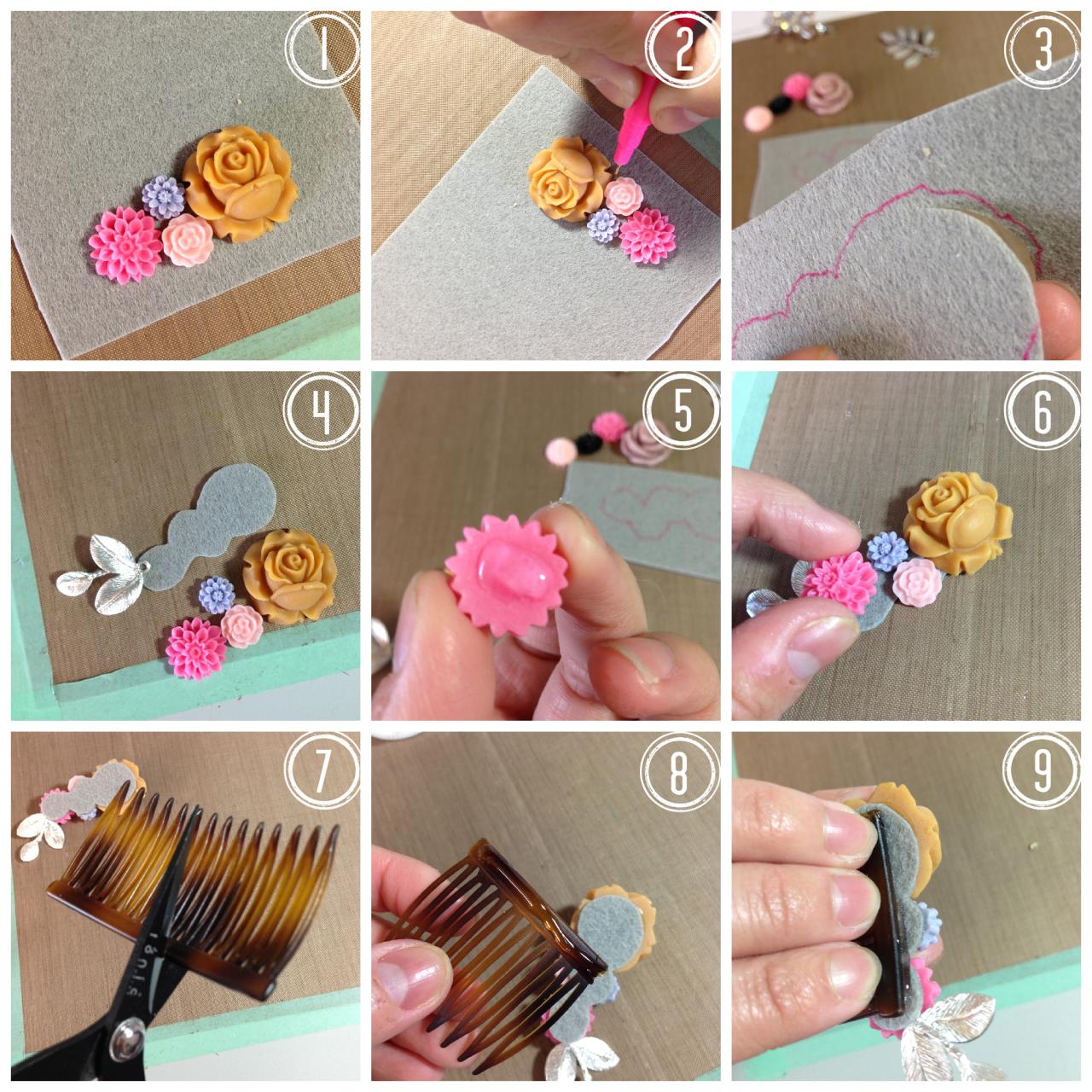
DIY accessories are a great way to express your personal style and add a unique touch to your wardrobe. From simple beaded bracelets to intricate macrame wall hangings, there are countless possibilities for creating your own accessories. Here, we’ll explore some popular DIY accessory projects for beginners, providing step-by-step instructions and visual guides to help you get started.
Beginner-Friendly DIY Accessory Projects
- Beaded Bracelets: Beaded bracelets are a classic DIY accessory that is easy to make and can be customized with different colors, beads, and charms. You can use a variety of beads, including glass beads, wooden beads, and gemstone beads. To create a simple beaded bracelet, you will need a stringing cord, beads, and a clasp. Thread the beads onto the stringing cord, leaving enough room at the end to attach the clasp. Once you have all of the beads on the cord, tie the ends together with a knot and attach the clasp.
- Fabric Scrunchies: Fabric scrunchies are a trendy and practical DIY accessory that can be made from a variety of fabrics, including cotton, silk, and velvet. To create a fabric scrunchy, you will need a piece of fabric, an elastic band, and a sewing machine or needle and thread. Cut a strip of fabric that is long enough to wrap around your wrist twice and wide enough to create a comfortable scrunchy. Sew the ends of the fabric strip together to create a loop, then thread the elastic band through the loop and sew it in place.
- DIY Earrings: Earrings are a versatile accessory that can be made in a variety of styles, from simple studs to statement earrings. To create your own earrings, you will need earring hooks, jump rings, and beads or other embellishments. Attach the beads or embellishments to the jump rings, then attach the jump rings to the earring hooks.
Step-by-Step Instructions for Creating a Beaded Bracelet
- Gather your materials. You will need a stringing cord, beads, and a clasp.
- Cut the stringing cord to the desired length. Make sure to leave enough extra cord to tie the ends together and attach the clasp.
- Thread the beads onto the stringing cord. You can use any combination of beads that you like.
- Tie the ends of the stringing cord together with a knot. Make sure the knot is secure so that the beads do not come off.
- Attach the clasp to the ends of the stringing cord. You can use a crimp bead or a wire loop to attach the clasp.
Visual Guide for Creating a Macrame Wall Hanging, Diy accessories
To create a macrame wall hanging, you will need macrame cord, a dowel rod, a pair of scissors, and a tape measure. The image below shows the steps involved in creating a simple macrame wall hanging.
Image Caption: A visual guide for creating a macrame wall hanging. The image shows the steps involved in creating a simple macrame wall hanging, from cutting the cord to tying the knots.
DIY accessories are a great way to add a personal touch to any outfit. From earrings to bracelets, you can create unique pieces that reflect your style. If you’re looking for a special gift for your loved one, why not try making a DIY Valentine’s gift ?
A handcrafted accessory is sure to be cherished and appreciated, and it’s a great way to show your creativity and love. So get creative and start crafting your own unique DIY accessories!
Techniques and Skills for DIY Accessories
Crafting DIY accessories involves a variety of techniques, each requiring specific skills and tools. Mastering these techniques is crucial for creating beautiful and durable pieces.
Knotting
Knotting is a fundamental technique used in various DIY accessory projects, especially jewelry and macrame. It involves creating intricate patterns and structures using strings or cords.
- Basic Knots: Begin with mastering basic knots like the square knot, the overhand knot, and the figure-eight knot. These knots form the foundation for more complex patterns.
- Macrame Knots: Macrame projects often use specialized knots like the lark’s head knot, the half hitch, and the spiral knot. These knots create elaborate textures and designs.
- Jewelry Knots: Jewelry making utilizes knots for creating closures, embellishments, and intricate chain patterns. Popular knots for jewelry include the double-half hitch knot, the barrel knot, and the Chinese knot.
Weaving
Weaving is a versatile technique used for creating a wide range of accessories, from bracelets and belts to wall hangings and baskets. It involves interlacing threads or cords to create intricate patterns and textures.
- Basic Weaving Techniques: Start with basic weaving techniques like plain weave and twill weave. These techniques create simple yet durable patterns.
- Advanced Weaving Techniques: Explore more advanced techniques like tapestry weaving, kumihimo braiding, and loom weaving. These techniques allow for more intricate designs and patterns.
- Materials for Weaving: Choose materials like yarn, thread, leather, and ribbon based on the desired texture and durability of your accessory.
Soldering
Soldering is a technique used for joining metal components in DIY accessories, particularly jewelry. It involves melting solder, a metal alloy, to create a bond between the pieces.
- Soldering Tools: Essential tools for soldering include a soldering iron, flux, solder, and a soldering mat.
- Safety Precautions: Always wear safety glasses and gloves when soldering. Work in a well-ventilated area to avoid inhaling fumes.
- Soldering Techniques: Practice soldering on scrap metal before working on your project. Apply flux to the metal surfaces to prevent oxidation and facilitate solder flow. Heat the metal with the soldering iron and apply the solder to the joint.
Stitching
Stitching is a fundamental technique used in various DIY accessory projects, from sewing fabric for bags and pouches to creating intricate beadwork for jewelry.
- Basic Stitches: Master basic stitches like the running stitch, the back stitch, and the slip stitch. These stitches are versatile and form the foundation for more complex embroidery techniques.
- Embroidery Stitches: Embroidery stitches like the satin stitch, the French knot, and the bullion stitch add intricate details and embellishments to accessories.
- Sewing Machines: For projects involving fabric, a sewing machine can speed up the stitching process and create more professional-looking seams.
Inspiration and Design Ideas
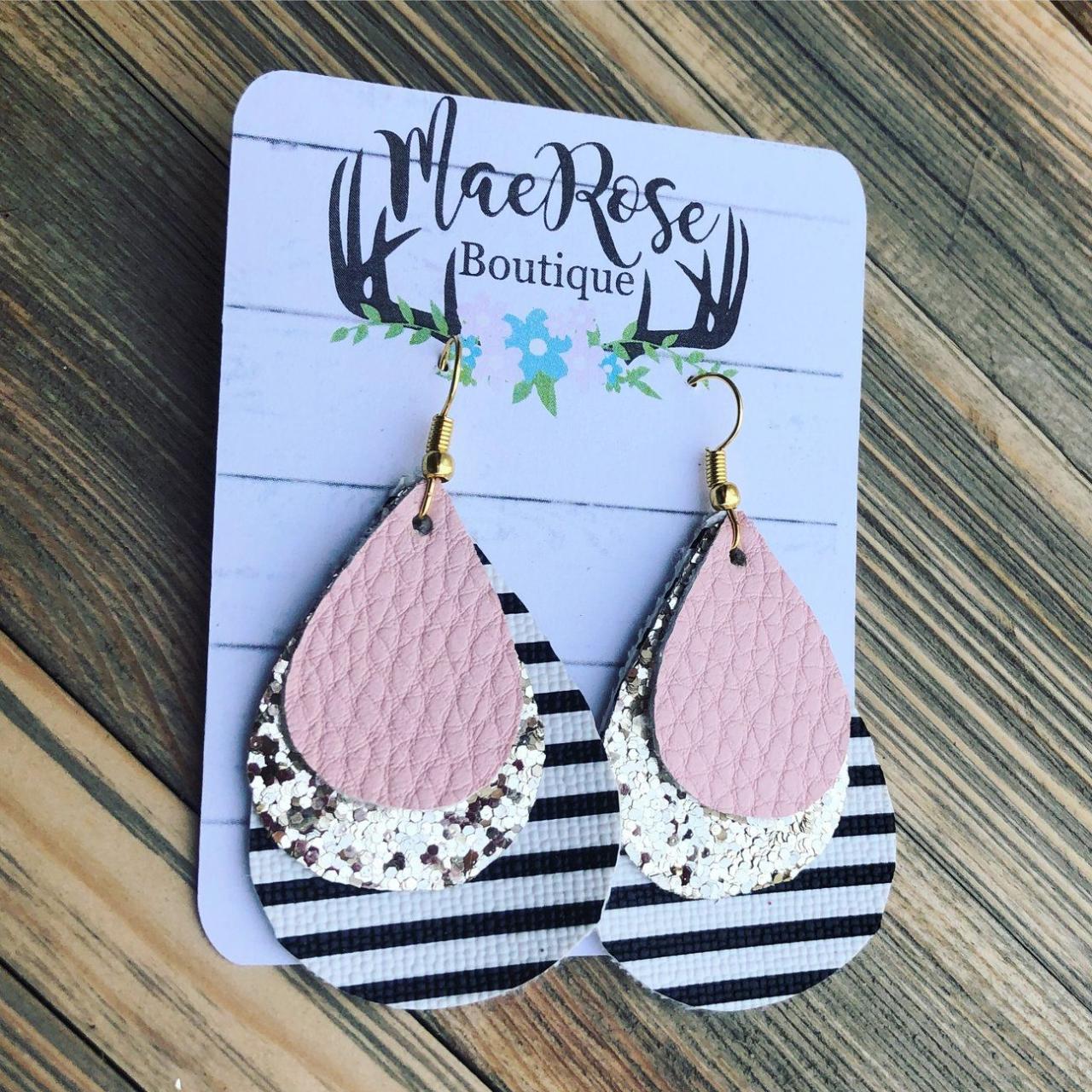
Crafting unique and personalized DIY accessories is all about drawing inspiration from various sources and translating those ideas into tangible creations. Whether you’re looking for trendy designs, classic styles, or something completely out of the box, the world of DIY accessories offers endless possibilities.
Popular Design Trends
The realm of DIY accessories is constantly evolving, reflecting current fashion trends and individual preferences. Here are some popular design trends to consider:
- Minimalist Aesthetics: Simple, clean lines, and muted colors are hallmarks of minimalist designs. Think delicate chains, geometric shapes, and subtle embellishments.
- Bold Statement Pieces: Stand out from the crowd with eye-catching accessories that make a statement. This could involve vibrant colors, oversized shapes, or unique textures.
- Sustainable and Eco-Friendly: Using recycled materials, natural fibers, and ethically sourced components is becoming increasingly popular. This trend aligns with conscious consumerism and a desire to reduce environmental impact.
- Personalized Touches: Adding a personal touch to your DIY accessories can make them truly special. This could involve incorporating initials, meaningful symbols, or customized engravings.
- Upcycled and Repurposed Materials: Giving new life to old items is a great way to create unique and sustainable accessories. This could involve using vintage buttons, scrap fabric, or repurposed jewelry.
Examples of Inspiring DIY Accessory Projects
Social media platforms like Pinterest, Instagram, and TikTok are overflowing with inspiring DIY accessory projects. These platforms showcase the creativity of individuals who share their designs, tutorials, and tips.
Here are some examples of popular DIY accessory projects that have gained traction on social media:
- Beaded Jewelry: Beaded necklaces, bracelets, and earrings are popular DIY projects. They allow for endless creativity with different bead colors, shapes, and textures.
- Macrame Accessories: Macrame is experiencing a resurgence in popularity. DIY macrame projects include plant hangers, wall decor, and unique jewelry.
- Resin Jewelry: Resin jewelry offers a versatile medium for creating unique and colorful pieces. You can embed flowers, glitter, and other elements into resin to create eye-catching designs.
- Upcycled Clothing Accessories: Transforming old clothing into new accessories is a great way to give old items a new lease on life. Examples include turning t-shirts into scrunchies or denim into wallets.
- DIY Hair Accessories: Headbands, barrettes, and hair clips are popular DIY accessories. You can use fabric, ribbon, or other materials to create stylish and personalized hair accessories.
Tips for Creating Unique and Personalized Designs
- Embrace Your Style: Don’t be afraid to express your unique style through your DIY accessories. Experiment with different colors, textures, and patterns that reflect your personality.
- Draw Inspiration from Nature: Nature is a rich source of inspiration for designs. Look to flowers, leaves, shells, and other natural elements for unique shapes and patterns.
- Experiment with Different Materials: Don’t limit yourself to traditional crafting materials. Explore alternative materials like recycled paper, plastic, or even food items for unexpected results.
- Play with Color Combinations: Color is a powerful design element. Explore different color palettes and experiment with contrasting or complementary colors to create visually appealing accessories.
- Incorporate Personal Touches: Add a personal touch to your designs by incorporating initials, meaningful symbols, or even pressed flowers. These details make your accessories truly unique.
Marketing and Selling DIY Accessories
The world of handmade accessories offers a unique and rewarding opportunity to turn your creativity into a profitable venture. From stylish jewelry to personalized home decor, the demand for handcrafted items continues to grow, driven by a desire for unique, high-quality, and ethically sourced products.
Selling Platforms
The online world offers numerous platforms for showcasing and selling your DIY accessories.
- Etsy: A popular marketplace specifically designed for handmade and vintage goods, Etsy provides a dedicated audience of buyers seeking unique and handcrafted items.
- Amazon Handmade: As part of the Amazon platform, Amazon Handmade offers exposure to a vast customer base, while providing a trusted and established brand for buyers.
- Shopify: A comprehensive e-commerce platform that allows you to create your own online store, giving you full control over your brand and website design.
- Instagram: A visual platform that allows you to showcase your products and connect with potential customers through engaging content and stories.
- Facebook Marketplace: A local marketplace that allows you to connect with buyers in your community, promoting your DIY accessories to a geographically targeted audience.
Craft fairs and markets offer a direct way to connect with potential customers and showcase your work.
- Local Craft Fairs: Attending local craft fairs provides an opportunity to interact with customers, receive immediate feedback on your products, and build a loyal following.
- Farmers Markets: Many farmers markets now feature dedicated sections for artisans and craftspeople, providing an opportunity to reach a diverse audience interested in locally made goods.
- Holiday Markets: Seasonal markets, particularly during holidays like Christmas or Easter, offer a significant opportunity to reach shoppers looking for unique gifts and decorations.
Professional Product Photography
High-quality product photos are crucial for attracting customers and conveying the quality and craftsmanship of your DIY accessories.
- Natural Lighting: Utilize natural light for a soft and flattering look. Position your product near a window, but avoid direct sunlight, which can create harsh shadows.
- Simple Background: Choose a neutral background that complements your product without distracting from its details. White, gray, or a textured fabric work well.
- Composition: Pay attention to the composition of your photos. Experiment with different angles and perspectives to find the most visually appealing shot.
- Editing: Use photo editing software to adjust brightness, contrast, and color balance for a professional finish. However, avoid excessive editing that distorts the product’s true appearance.
Conclusion
Creating DIY accessories is a rewarding and fulfilling experience that combines creativity, practicality, and a touch of personal style. This guide has provided a comprehensive overview of the world of DIY accessories, covering everything from basic materials and tools to advanced techniques and inspiration for unique designs. By embracing the DIY approach, you can express your individuality, save money, and enjoy the satisfaction of crafting something truly special.
Key Takeaways
Here are some of the key takeaways from this guide:
- DIY accessories offer a unique opportunity to express your creativity and personal style.
- With a little planning and effort, you can create high-quality accessories that reflect your individual taste and preferences.
- The world of DIY accessories is constantly evolving, offering a wide range of materials, techniques, and inspiration for your next project.
- There are numerous resources available to support your DIY journey, including online tutorials, workshops, and communities of like-minded individuals.
Wrap-Up: Diy Accessories

Embrace the world of DIY accessories, where imagination meets practicality. Whether you’re adding a personal touch to your wardrobe or creating gifts that speak from the heart, the journey of crafting your own accessories is a rewarding experience. So, gather your materials, unleash your creativity, and let your imagination take the lead.

